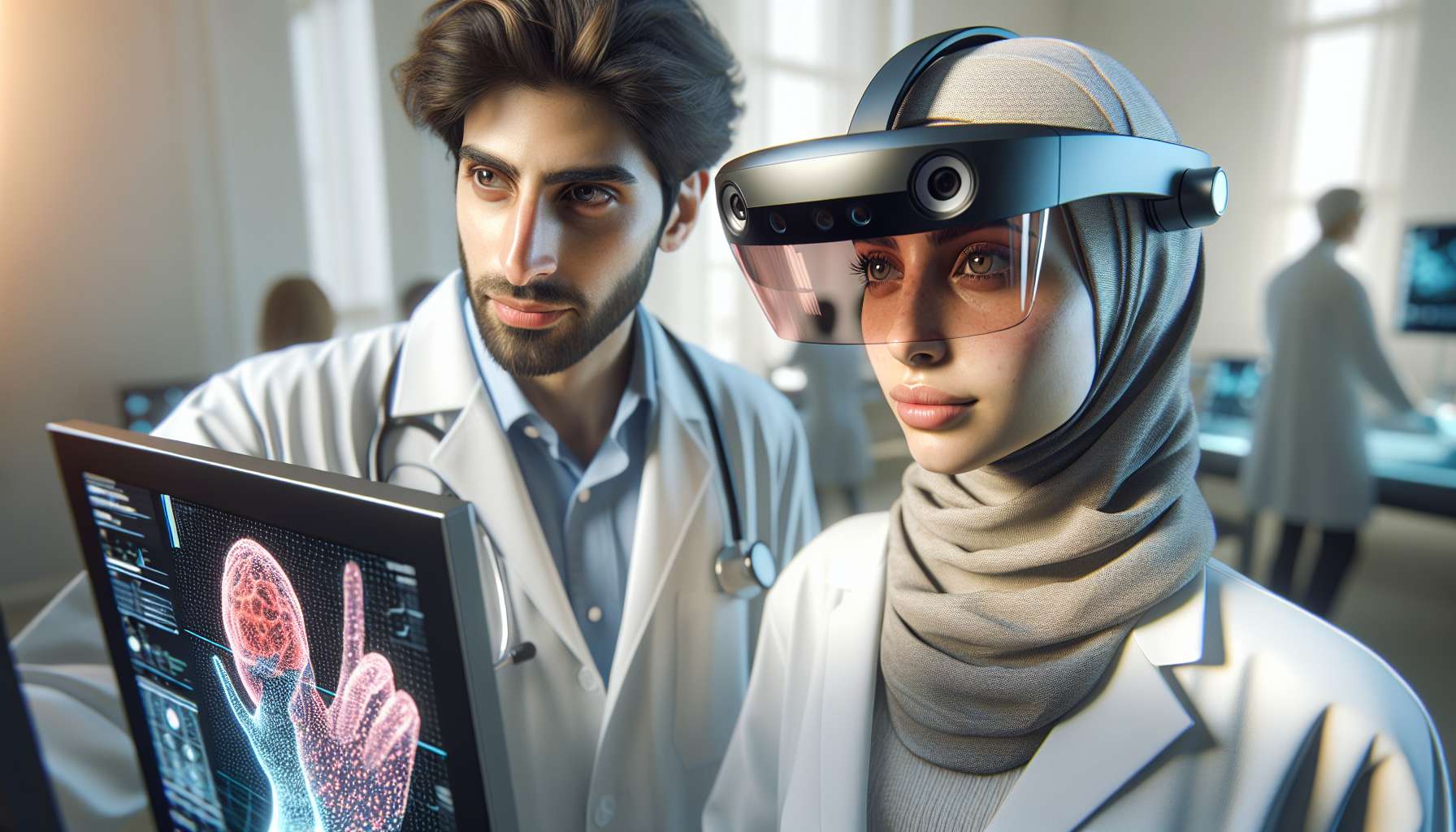The Power of Augmented Reality in Healthcare Diagnostics
Imagine a world where doctors can visualize and analyze medical data in real-time, right before their eyes. This is not a scene from a science fiction movie, but a reality made possible by the integration of augmented reality (AR) technology in healthcare diagnostics. AR is revolutionizing the way medical professionals diagnose and treat patients, leading to more accurate and efficient healthcare outcomes.
Enhancing Visualization and Precision
One of the key advantages of AR in healthcare diagnostics is its ability to enhance visualization. By overlaying digital information onto the real world, AR provides doctors with a comprehensive view of a patient’s anatomy, allowing for more precise and accurate diagnoses. For example, during surgical procedures, AR can project 3D models of organs or tumors onto the patient’s body, enabling surgeons to navigate complex anatomical structures with greater precision.
AR also enables doctors to visualize medical imaging data, such as CT scans or MRIs, in a more intuitive and interactive manner. Instead of examining 2D images on a screen, doctors can use AR headsets or smart glasses to view the data in 3D, enabling them to identify abnormalities or anomalies more easily. This enhanced visualization not only improves diagnostic accuracy but also facilitates better patient communication, as doctors can explain complex medical conditions more effectively.
Streamlining Workflow and Collaboration
AR technology has the potential to streamline healthcare workflows and enhance collaboration among medical professionals. With AR, doctors can access patient information, medical records, and real-time data without having to shift their focus away from the patient. This seamless integration of information allows for more efficient decision-making and reduces the risk of errors or oversights.
Furthermore, AR enables remote collaboration, breaking down geographical barriers and facilitating knowledge sharing among healthcare professionals. For instance, a specialist located in a different city or country can virtually assist a local doctor during a complex procedure, providing real-time guidance and expertise. This not only improves patient outcomes but also expands access to specialized care, particularly in underserved areas.
Empowering Patient Engagement and Education
AR technology is not only transforming the way doctors work but also empowering patients to take an active role in their healthcare journey. By using AR applications, patients can visualize their own medical data, such as X-rays or lab results, in a more understandable format. This fosters better patient engagement and enables individuals to make informed decisions about their treatment options.
AR can also be utilized for patient education, allowing doctors to explain complex medical procedures or conditions in a more interactive and engaging manner. For example, a surgeon can use AR to demonstrate the steps of a surgical procedure, helping patients understand the process and alleviate anxiety. This enhanced patient education leads to improved compliance, better treatment outcomes, and ultimately, a more positive patient experience.
The Future of Healthcare Diagnostics
The potential of AR in healthcare diagnostics is vast and continues to expand. As technology advances, we can expect to see even more sophisticated applications of AR in the medical field. From real-time monitoring of vital signs to personalized treatment plans based on patient-specific data, AR has the potential to revolutionize healthcare delivery.
With the integration of artificial intelligence (AI) algorithms, AR can analyze vast amounts of medical data and provide doctors with valuable insights and recommendations. This combination of AR and AI has the potential to significantly improve diagnostic accuracy, reduce medical errors, and enhance patient outcomes.
As we move forward, it is crucial for healthcare professionals and organizations to embrace the power of AR in healthcare diagnostics. By harnessing this technology, we can unlock new possibilities for precision medicine, personalized care, and improved patient experiences. The future of healthcare is here, and AR is leading the way.





